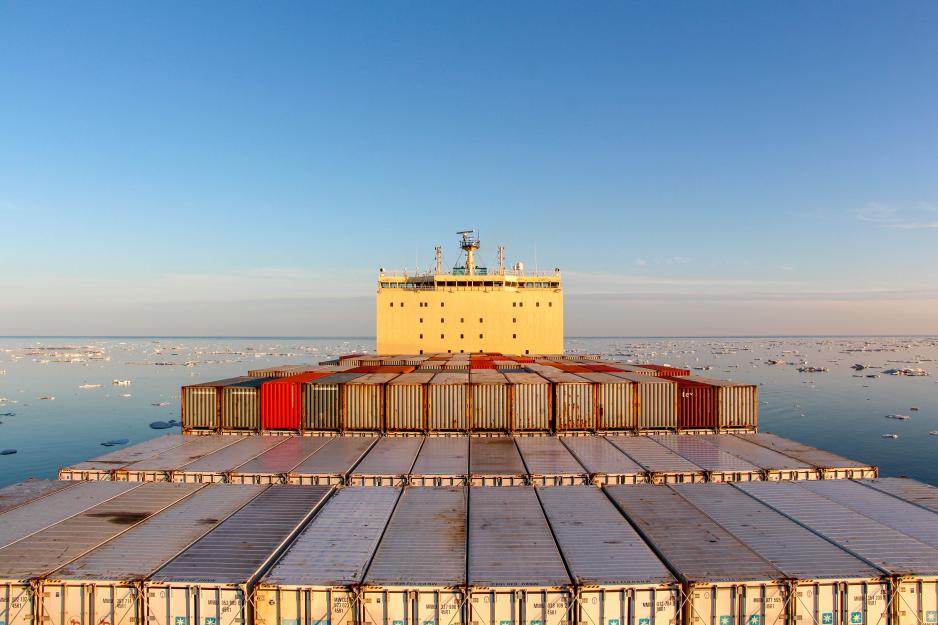US Government Investigates Strategic Importance of Northern Sea Route as Part of Study on Maritime Chokepoints

The Venta Maersk on the Northern Sea Route during September 2018. (Source: Courtesy of Maersk)
The U.S. government’s Federal Maritime Commission has initiated an investigation of global maritime chokepoints. In addition to more traditional passages like the Suez Canal, it has also included the Arctic’s Northern Sea Route in the upcoming study. According to the FMC the route has the potential to reshape global trade patterns.
The U.S. Government has identified Russia’s Northern Sea Route as an emerging and critical choke point in international shipping that could reshape global trade patterns.
“As the region's waters become ice-free for longer periods, the Northern Sea Passage offers a shortcut between Europe and Asia, reducing travel time and fuel consumption,” the Federal Maritime Commission writes.
The commission is an independent agency of the government regulating oceanborne transportation.
The FMC further points out that the opening of the Arctic to shipping “has sparked competition over governance, with Russia seeking control over the shortest maritime route between Europe and Asia, and imposing fees, while other nations push for international access.”
The U.S. has thus far not sent any commercial vessels through the Arctic or along Russia’s Northern Sea Route. Two summers ago the U.S. Coast Guard icebreaker Healy traveled adjacent to the NSR but remained outside Russia’s exclusive economic zone and territorial waters.
The Northern Sea Passage's strategic importance is further amplified by increased military activity from Russia and China
In contrast commercial shipping companies from both Russia and China have gained substantial experience on how to operate in the region.
The two countries have also collaborated on joint Arctic patrols, including in proximity of Alaska during the summer of 2024 as well as in the Barents Sea near Norway.
“The Northern Sea Passage's strategic importance is further amplified by increased military activity from Russia and China, including new bases and icebreakers,” the FMC writes.
The research into the NSR is part of a larger study by the agency into seven global choke points, such as the Suez and Panama Canals as well as Straits in Gibraltar and Singapore.
Increasing stakes in Arctic
Some Arctic logistics and security experts have long argued that the strategic importance of emerging Arctic shipping lanes is set to increase.
Also read (The text continues)
The FMC is calling for public comment on the study by May 13, 2025. The inclusion of the Arctic into this broad investigation into international maritime chokepoints continues the recent surge of Arctic policy interest in the U.S.
For much of the past six months President Donald Trump’s comments on Greenland, including visits by one of his sons and Vice President JD Vance, have perpetually kept the Arctic in the country’s news cycle.
While Greenland’s mineral wealth is often front and center as to why Trump is interested in the territory, others point to the island’s central location along potential future Arctic shipping routes.
As the sea ice continues to recede, a central Arctic shipping route, referred to as the Transpolar Sea Route, passing along the east coast of Greenland, could emerge.
The FMC also references the recent increase in naval military activity along Arctic trade routes.
“[This] is reflecting its growing value for nuclear deterrence and missile defense. As a result, both Russia and NATO forces are ramping up their military presence, increasing the potential for tensions and conflicts,” the FMC concludes.


